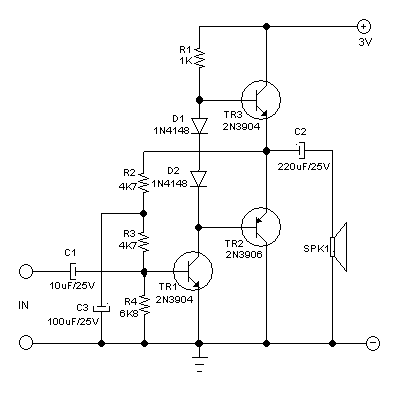
Then the amplifier has a Voltage Gain, (Av) of 100, a Current Gain, (Ai) of 10 and a Power Gain, (Ap) of 1,000 Also, express all three gains in decibels, (dB). Introduction to the Amplifier Example No1ĭetermine the Voltage, Current and Power Gain of an amplifier that has an input signal of 1mA at 10mV and a corresponding output signal of 10mA at 1V. The -3dB point of an amplifier is called the half-power point which is -3dB down from maximum, taking 0dB as the maximum output value.

For example, an amplifier gain of +3dB indicates that the amplifiers output signal has “doubled”, (x2) while an amplifier gain of -3dB indicates that the signal has “halved”, (x0.5) or in other words a loss. Note however, that 20dB is not twice as much power as 10dB because of the log scale.Īlso, a positive value of dB represents a Gain and a negative value of dB represents a Loss within the amplifier. Note that the DC power gain of an amplifier is equal to ten times the common log of the output to input ratio, where as voltage and current gains are 20 times the common log of the ratio. No matter how complicated an amplifier circuit is, a general amplifier model can still be used to show the relationship of these three properties. Introduction to the Amplifier – Classification Amplifier Type of SignalĪmplifiers can be thought of as a simple box or block containing the amplifying device, such as a Bipolar Transistor, Field Effect Transistor or Operational Amplifier, which has two input terminals and two output terminals (ground being common) with the output signal being much greater than that of the input signal as it has been “Amplified”.Īn ideal signal amplifier will have three main properties: Input Resistance or (R IN), Output Resistance or (R OUT) and of course amplification known commonly as Gain or ( A). The type or classification of an Amplifier is given in the following table. The classification of an amplifier depends upon the size of the signal, large or small, its physical configuration and how it processes the input signal, that is the relationship between input signal and current flowing in the load.

There are many forms of electronic circuits classed as amplifiers, from Operational Amplifiers and Small Signal Amplifiers up to Large Signal and Power Amplifiers. In “Electronics”, small signal amplifiers are commonly used devices as they have the ability to amplify a relatively small input signal, for example from a Sensor such as a photo-device, into a much larger output signal to drive a relay, lamp or loudspeaker for example. However as we will see in this introduction to the amplifier tutorial, not all amplifier circuits are the same as they are classified according to their circuit configurations and modes of operation. Amplifier is the generic term used to describe a circuit which produces and increased version of its input signal.


 0 kommentar(er)
0 kommentar(er)
